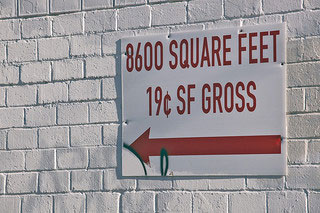
Source: 19 cents of Gross, Cobalt123, Flickr

Source: News-001, Ludie Cochrane, Flickr
As you probably have learned from your own writing, choosing the right words and putting them in the right order are important when you want to engage your readers, persuade them to your point of view, or even just make them laugh.
Read the following headlines from the Web site plainlanguage.gov:
- Enraged Cow Injures Farmer with Ax
- Farmer Bill Dies in House
- Red Tape Holds Up New Bridges
If you read each headline very carefully, you can understand what each article is about, but the syntax of the headlines makes them pretty funny and obscures the writer’s meaning.
 Using your notes, rewrite each headline so that its meaning is clear. Assume that all the details included in the headline are important. You may add words or change word endings if needed. When you are finished, check your understanding to see possible responses.
Using your notes, rewrite each headline so that its meaning is clear. Assume that all the details included in the headline are important. You may add words or change word endings if needed. When you are finished, check your understanding to see possible responses. Sample Responses:
- Enraged Cow Injures Ax-Bearing Farmer
- Farm Bill Dies in House
- New Bridge Permits Held Up by Red Tape
Now, read a short poem by William Carlos Williams, “Winter Trees.”

Source: December winter, Norooda, Wikimedia
Winter Trees
By Willam Carlos Williams
All the complicated details
of the attiring and
the disattiring are completed!
A liquid moon
moves gently among
the long branches.
Thus having prepared their buds
against a sure winter
the wise trees
stand sleeping in the cold.
If you read closely, the poet’s meaning is very clear. He uses the words “attiring” and “disattiring” to compare the new leaves of spring and the dropping leaves before winter to people getting dressed for the day and then undressed for bed. The “wise trees” have dropped their leaves to prepare for the long winter, but the reader doesn’t know that the poet is writing about trees until the end of the poem. Though this poem is three complete sentences, it is very much like a periodic sentence that contains several clauses at the beginning of the sentence with the subject and verb emerging at the end. Like a periodic sentence, the subject of the poem doesn’t emerge until the next to last line.
Why do you think William Carlos Williams waited until the end to tell the reader that his subject is trees? In the first two lines, we might even think that he is talking about a person who is dressing and undressing.
Why does he want us to “discover” that he’s talking about trees losing leaves in the winter?
How does the unfolding of understanding add interest and even meaning to the poem?
 Read the poem again carefully, looking at all the words and the punctuation. Consider the questions above, and write a summary of the poem using your notes. When you are finished, check your understanding to see a sample response.
Read the poem again carefully, looking at all the words and the punctuation. Consider the questions above, and write a summary of the poem using your notes. When you are finished, check your understanding to see a sample response. Sample Response:
The poem gives the reader a sense of business at the beginning by using the word “complicated” and by ending the sentence with an exclamation point. The moon then moves gently as everything in the poem is moving toward sleep. It’s as if the poet moves the reader, slowing the action from the busy day to the quiet of night. Readers are left with the image of a hibernating animal that had been in a flurry of preparation earlier.